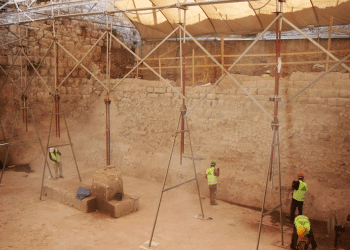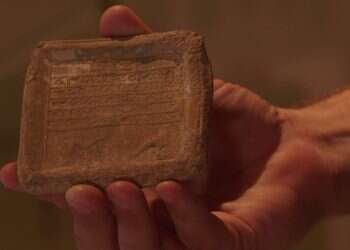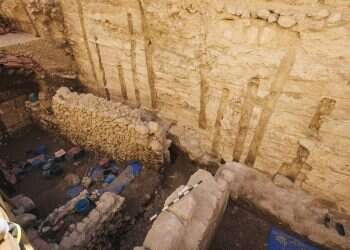Kfar Nefach on the Golan Heights has recently been the subject of popular discussion thanks to a popular new drama series about the Yom Kippur War that airs on Channel 11. But last month, Israel Antiquities Authority archaeologists excavating on the Golan discovered a rock that was inscribed with the name "Kfar Nefach" – in Greek – some 1,700 years ago.
The rock was dug up as part of preparations to lay a water pipeline. The Nefach-Kidmat Zvi pipeline is planned to serve as the main water supply for IDF bases on the Golan Heights, as well to the town of Katzrin.
Follow Israel Hayom on Facebook and Twitter
Students from the Maayan Baruch and Kela-Alon pre-military academies and local volunteers took part in the dig that uncovered the rock carved with Greek letters. It had been used to cover a grave. Dr. Danny Syon of the IAA and Professor Haim Ben David of Kinneret Academic College decoded the writing.

"The inscription, which mentions the name Kfar Nefach, was carved into a rock used as a boundary marker. These stones were carved in the time of the Roman Emperor Diocletian, around 300 CE, on the borders of villages for tax purposes. This is the first boundary market from the central Golan Heights that bears a name that has survived until today. Nefach was the name of the Syrian village that was here until the Six-Day War, and the name of the IDF's Camp Nefach, which is still here," the researchers said.
According to researchers, names usually survived thanks to continued settlement that preserves them from one generation to another. However, they said, no such continuous population existed at Nefach, which was unpopulated from the Byzantium era, 1,500 years ago, until the modern era, with the exception of the Mamluk period in the 13th to 15th centuries CE.
Subscribe to Israel Hayom's daily newsletter and never miss our top stories!




